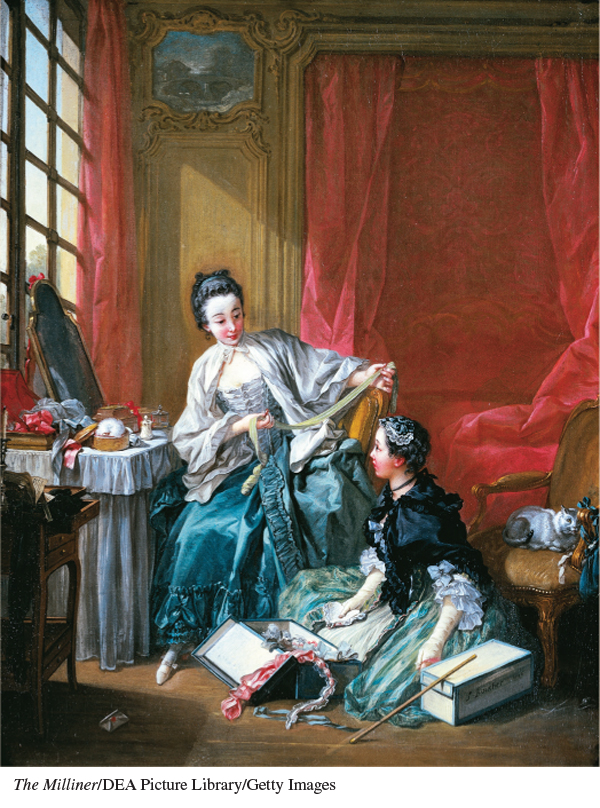A History of Western Society: Printed Page 593
A History of Western Society, Concise Edition: Printed Page 595
Individuals in Society
Rose Bertin, “Minister of Fashion”
O ne day in 1779, as the French royal family rode in a carriage through the streets of Paris, Queen Marie Antoinette noticed her fashion merchant, Rose Bertin, observing the royal procession. “Ah! there is mademoiselle Bertin,” the queen exclaimed, waving her hand. Bertin responded with a curtsy. The king then stood and greeted Bertin, followed by the royal family and their entourage.* The incident shocked the public, for no common merchant had ever received such homage from royalty.
Bertin had come a long way from her humble beginnings. Born in 1747 to a poor family in northern France, she moved to Paris in the 1760s to work as a shop assistant. Bertin eventually opened her own boutique on the fashionable rue Saint-
Based on the queen’s patronage, and riding the wave of the new consumer revolution, Bertin became one of the most successful entrepreneurs in Europe. Bertin established not only a large clientele, but also a reputation for pride and arrogance. She refused to work for non-
In January 1787 rumors spread through Paris that Bertin had filed for bankruptcy with debts of 2 to 3 million livres (a garment worker’s annual salary was around 200 livres). Despite her notoriously high prices and rich clients, this news did not shock Parisians, because the nobility’s reluctance to pay its debts was equally well known. Bertin somehow held on to her business. Some said she had spread the bankruptcy rumors herself to shame the court into paying her bills.
Bertin remained loyal to the Crown during the tumult of the French Revolution (see Chapter 19) and sent dresses to the queen even after the arrest of the royal family. Fearing for her life, she left France for Germany in 1792 and continued to ply her profession in exile. She returned to France in 1800 and died in 1813, one year before the restoration of the Bourbon monarchy might have renewed her acclaim.†
Rose Bertin scandalized public opinion with her self-

QUESTIONS FOR ANALYSIS
- Why was the relationship between Queen Marie Antoinette and Rose Bertin so troubling to the public? Why would relations between a queen and a fashion merchant have political implications?
- Why would someone who sold fashionable clothing and accessories rise to such a prominent position in business and society? What makes fashion so important in the social world?